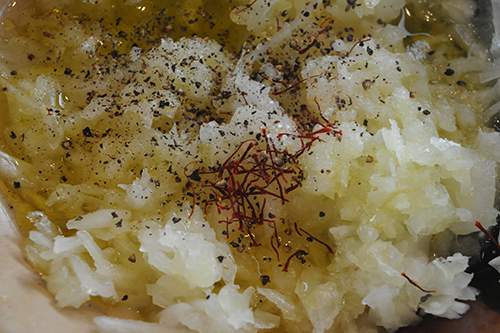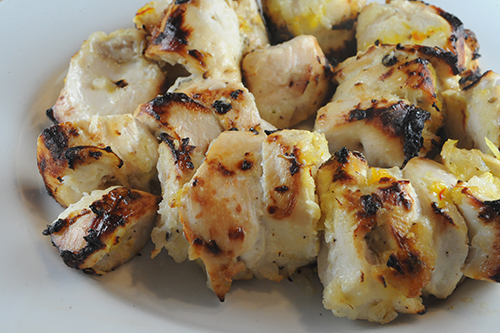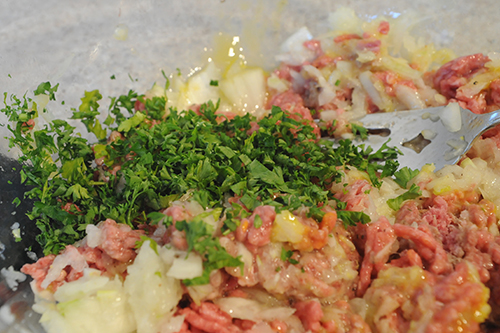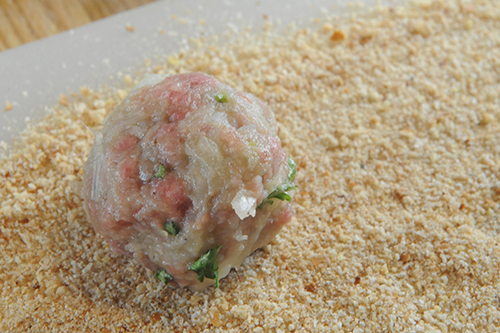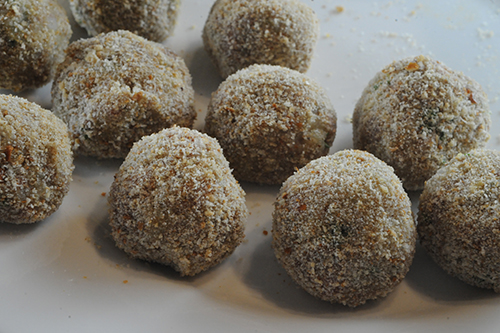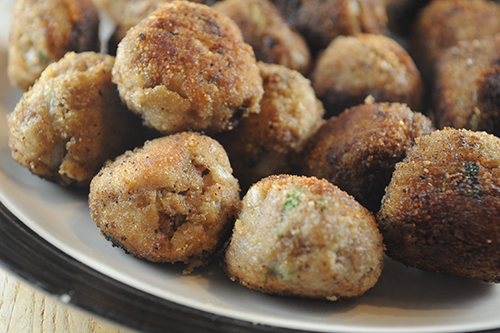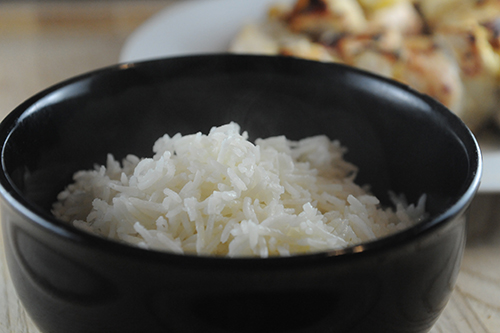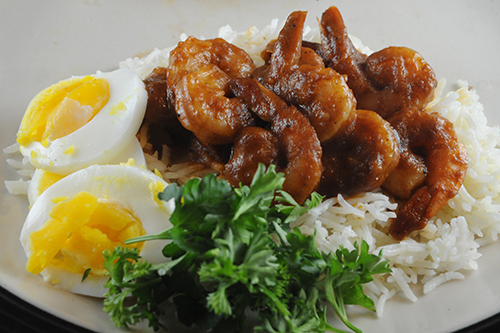So I won't bore you by telling you a bunch of stuff about Iraq that you already know. Instead I will start this entry with a bunch of useless bits of trivia.
In Biblical times, Iraq was known as Mesopotamia. Many of the places mentioned in the Bible are in Iraq, such as the Garden of Eden and the Tower of Babel. There have been stable populations living in this part of the world since the 7th century BC, which is remarkable when you consider that so much of the country is inhospitable. Over half of it is covered by desert, and sand and dust storms occur regularly, up to 50 times a year. Sandstorms can be 50 feet high but dust storms can reach an incredible 3,000 to 6,000 feet, which is roughly half as tall as Mount Everest is (from base to peak).
Iraq was the place of origin for the 60 second minute and the 60 minute hour, the wheel, the first accurate calendar and the first maps. The world's oldest known system of writing was developed in Iraq, but today only about 40% of Iraqis can read and write.
Finally, Iraq is home to one of the worlds most poisonous snakes: the saw-scale viper, which has been known to bite people for fun and also chase them. Yeah, I'm pretty sure I never want to go to Iraq.
 |
| The saw scale viper. No, thank you. |
Fortunately, the good parts of Iraq can come to me instead. The food, mean. It may interest you to know that in addition to all those other firsts mentioned above, Iraq is also the place of origin for the world's first cookbooks--stone tablets that show recipes prepared for religious festivals. Much of Iraq's modern culinary traditions are inherited from ancient Mesopotamia, but there are also influences from neighboring countries such as Iran, Turkey and Syria.
Here are the recipes I chose for this week's menu:
Dijaj bil-Timman il-Ahmar (Chicken with Red Rice)
(from
Delights from the Garden of Eden
by Nawal Nasrallah)
- 3 lbs bone-in chicken
- 2 tbsp olive oil
- 1 medium onion, coarsely chopped
- 3 heaping tbsp tomato paste
- 6 cups hot water
- 1 tsp Noomi Basra
 , ground*
, ground*
- 1 tsp coriander
- 1 tsp salt
- 1/2 tsp black pepper
- 4 to 5 cardamom pods
- 1 bay leaf
- 2 cups Basmati rice
- 3 eggs, boiled and sliced
- 1/4 cup toasted slivered almonds
- 1/4 cup raisins
*Noomi Basra is a dried Persian lime. I got mine on Amazon.
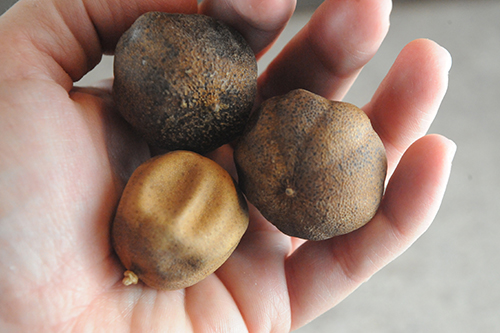 |
| These are Noomi Basra--dried Persian limes. |
Tabbouleh
(from
The Maajabua Forum)
- 1 cup bulghur wheat
- 1 1/2 cups boiling water
- Juice of 2 lemons
- 1/4 cup extra virgin olive oil
- 3 1/2 tsp kosher salt
- 1 cup minced scallions, white and green parts
- 1 cup chopped fresh mint leaves
- 1 cup chopped flat-leaf parsley
- 1 hothouse cucumber, unpeeled, seeded, and medium-diced
- 2 cups cherry tomatoes, cut in half
- 1 tsp freshly ground black pepper
Iraqi Bread with Cheese and Olives
(from the
Abjdeat Forum)
- 5 cups white flour
- 2 1/4 cups warm water
- 1/4 tsp active dry yeast
- 1/2 tsp salt
- 1/4 cup kalamata olives, seeded and sliced
- 1/4 cup feta cheese, crumbled
And for dessert:
Madgooga
(from
In My Iraqi Kitchen)
- 1/2 cup flour
- 2 cups pitted dates
- 1/2 cup tahini
- 1 tsp cardamom
- 1/2 tsp coarsely ground toasted aniseeds
- 1/2 tsp crushed coriander seeds
- 1/2 cup toasted walnut halves
- 1/4 cup coarsely crushed pistachio
The tabbouleh is easy, because it's just a salad, so let's start there. First put the bulgur wheat in a bowl and pour the boiling water over it. Add the lemon juice, oil, and 1 1/2 tsp of the salt and give it a stir, then let it sit at room temperature for one hour, or until soft. Now stir in the remaining ingredients and serve.
Now for the bread:
Mix the yeast in with a little bit if water and let stand until frothy. Then mix together the flour and the rest of the water and add the yeast mixture. Knead until you get a soft dough. Let rise in a warm place for about an hour and a half. Now roll the dough flat and sprinkle the olives and feta cheese over one half.
Fold over and roll again, taking care that the olives don't burst through the surface of the dough.
Brush the top with olive oil.
Preheat your oven to 450 degrees. Put a large baking sheet into the oven for 10 minutes, then transfer the bread to the warmed baking sheet. Bake for four to six minutes, or until the bread starts to puff up and forms a pale golden crust. Take it out and gobble it up.
Now for the dessert, which I don't mind saying is quite strange by American standards:
First, toast the flour. Not in a toaster, in a dry pan. Just put it in and stir until it turns a golden brown color and starts to smell a bit nutty. This should take around five minutes. Let cool.
Now transfer the flour to a food processor with everything but the nuts. Process until you get a paste. Now take note, if you are using dried dates as I was you may have to add a little bit of water. Your goal should be a paste that can be shaped into a ball.
Now divide the paste into two parts and shape into the aforementioned balls. Flatten them, and sprinkle the toasted walnuts over one of the two disks. Then top with the second disk and sprinkle the pistachios on top of that one. That's it, no baking required.
And now for the main course:
First, rinse the rice until the water runs clear, then soak in cold water for 30 minutes. Drain and set aside.
Meanwhile, in a large skillet, brown the chicken pieces in the oil. Drain and transfer to a large pot.
Now sauté the onion in that same skillet until translucent. Then pour on top of the chicken.
Dissolve the tomato paste in the hot water, then stir in the Noomi Basra, coriander, salt, pepper and cardamom. Pour over the chicken and drop in the bay leaf. Bring to a boil, then reduce heat and simmer for 30 minutes or so, or until the chicken is cooked through and tender.
Now remove the chicken and check to see how much water is left. You need four cups--if there isn't enough add a little. If there's too much, pour some away.
Put the rice in a medium pot and add the water. Bring to a boil, and let boil for 5 minutes. Reduce heat to low and give the rice a gentle stir. Then cover the pot and let simmer for 20 minutes. Fluff and transfer to a platter. Arrange the chicken pieces around the outside of the platter and garnish with the egg slices, almonds and raisins. Serve with plain yogurt on the side.
Ok, the tabbouleh. Did not like, but purely because of my personal tastes. I just don't like mint. This may harken back to my childhood, when my grandma had a mint plant and my sister and I used to pull the leaves off and eat them until one day my mom suggested that the cat might have been peeing in there. And so ended my positive relationship with mint. I think this would have been great sans-mint, because I do enjoy bulgur wheat.
The chicken was good, but I have to agree with Martin when he shrugged and said "It's just chicken." It really wasn't terribly exciting, despite how yummy that Noomi Basra smelled when I was grinding it up. The rice was very good though--I think that was where all the flavor ended up.
Loved the bread. I mean, it was pretty standard but the olives and feta made it delicious.
As for the dessert, well, I wanted to like it. I really did. But it was just ... weird. Maybe without the tahini, which I think has a really strong flavor and doesn't seem like it should be in a dessert. Give me hummus, please, but in a dessert ... Hmm. My kids were so disappointed by this dessert that I had to give them candy to appease them. I really think it would have been fine if that date flavor hadn't been so overwhelmed by the tahini, but again, opinions opinions. Funnily, I put the rest of the dessert on top of the microwave and it slowly vanished over the course of a few days, so clearly someone in my house liked it. Martin, I'm sure, because my kids wouldn't have touched it if they were starving in the desert.
Next week: Ireland
For printable versions of this week's recipes:
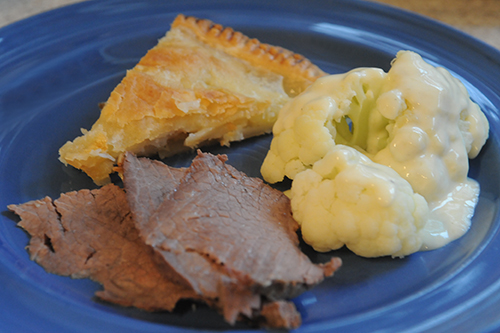

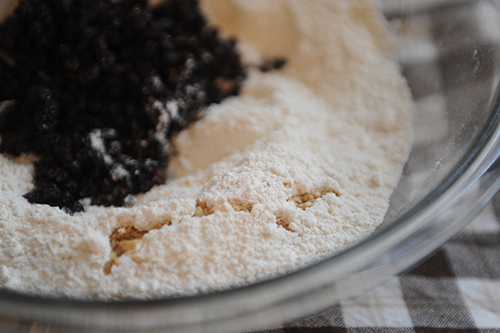
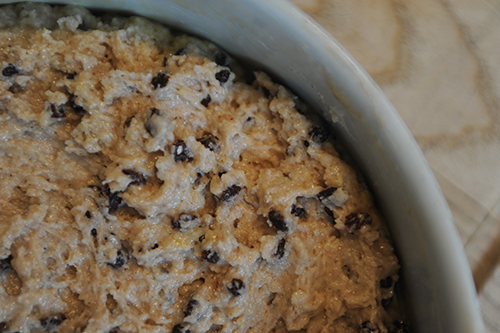
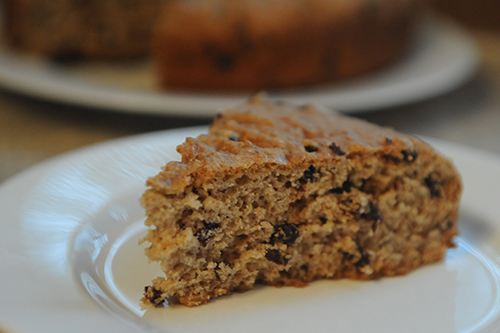
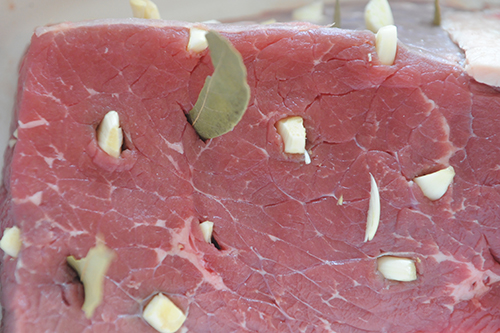

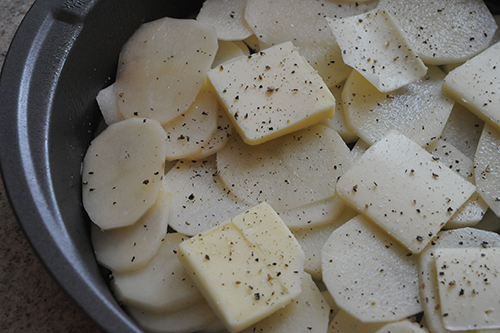
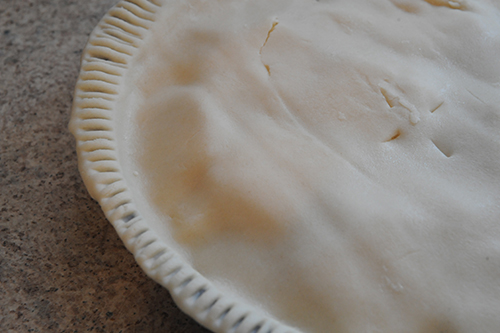
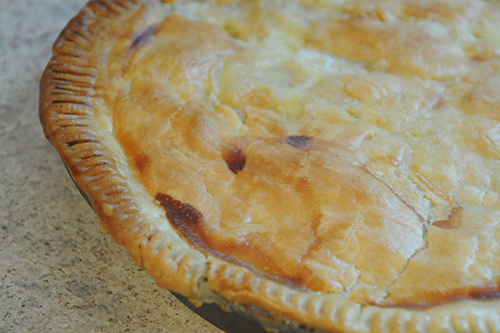
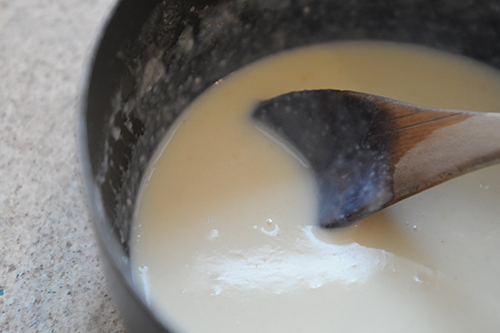

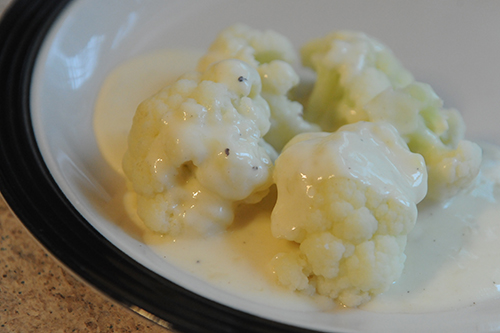












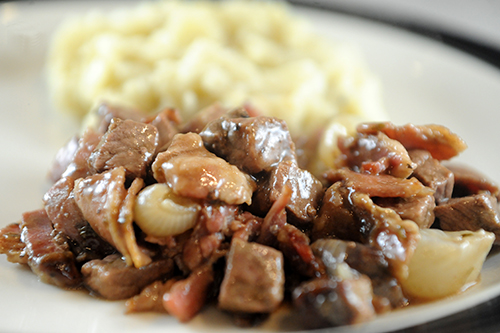


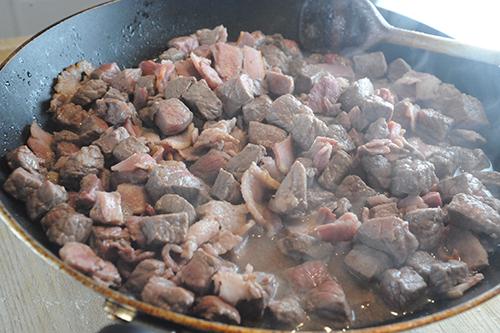
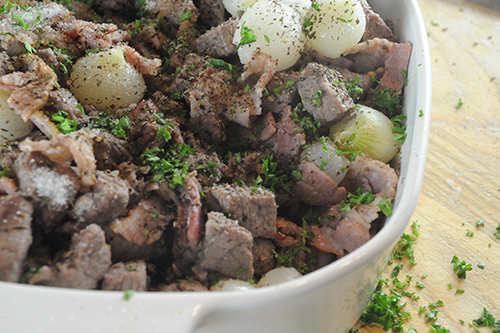
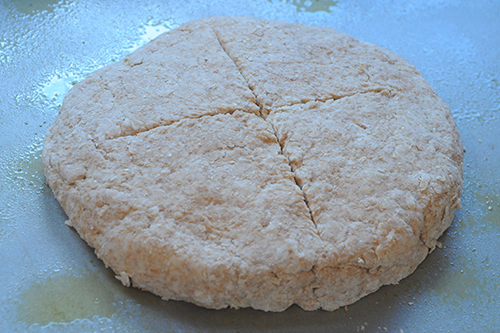
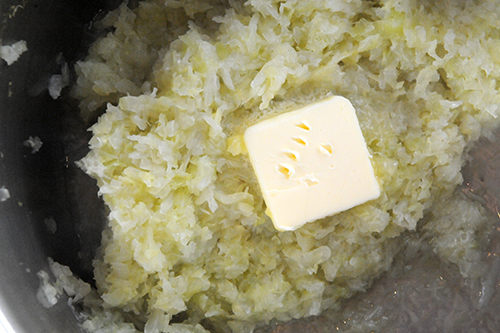
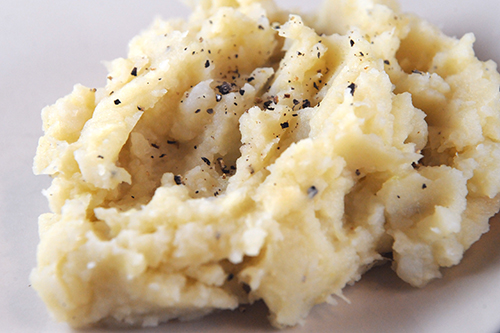
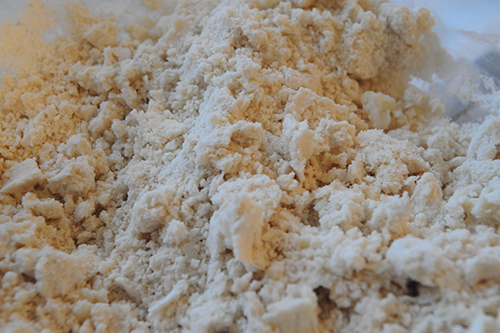
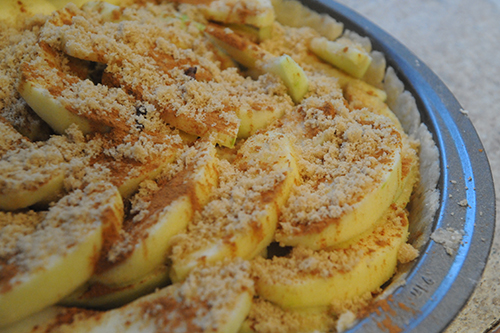
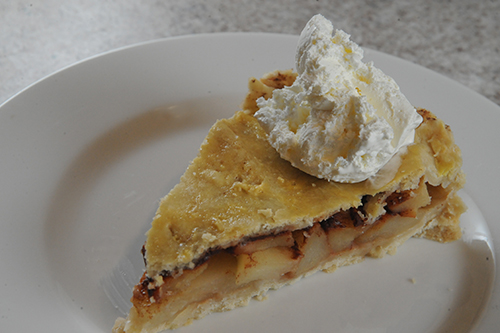
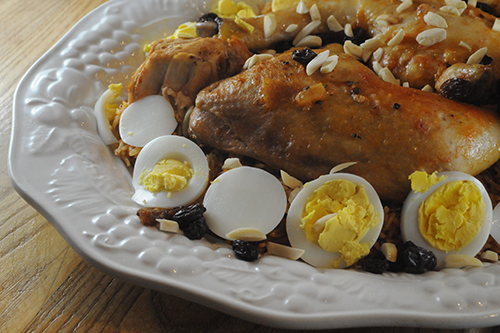



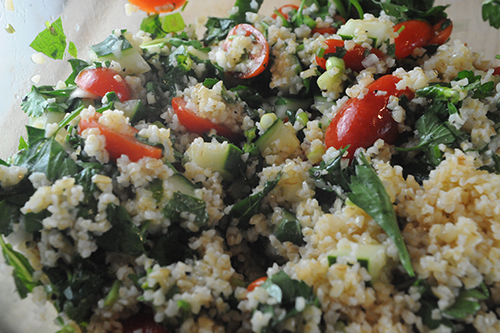
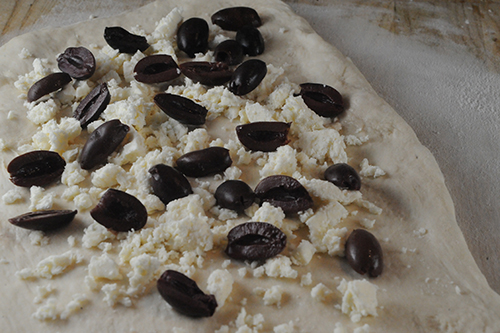
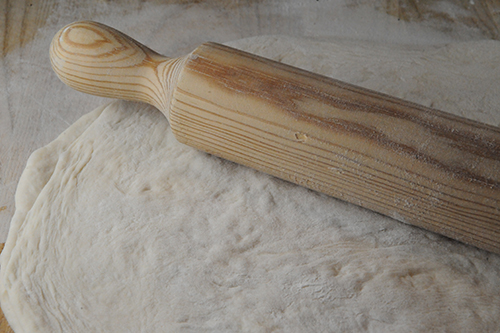
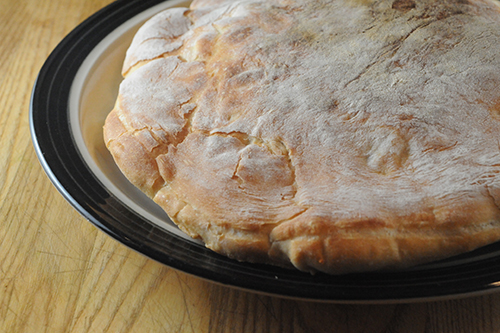

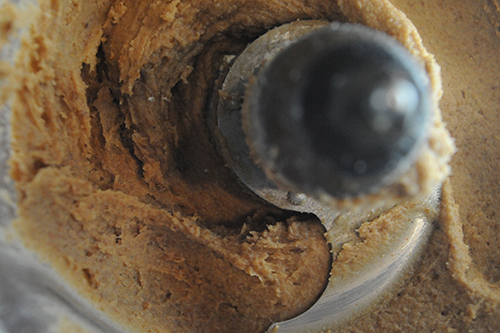
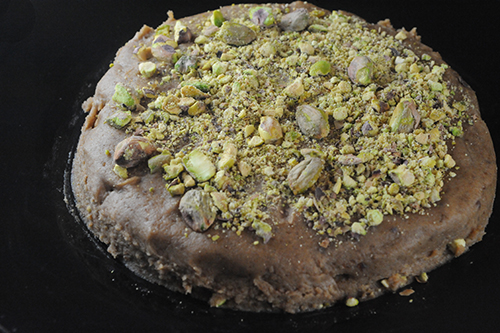
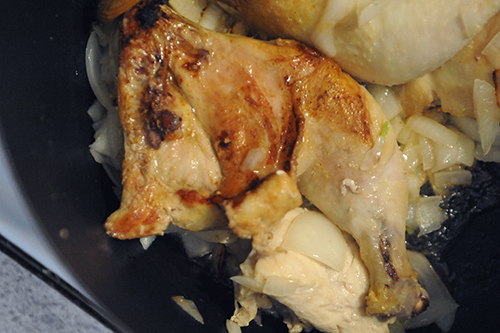
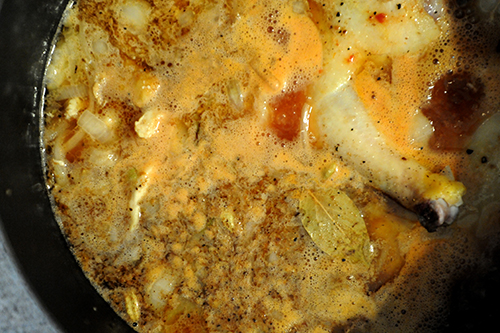
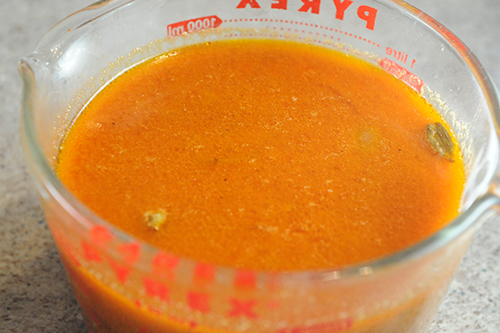
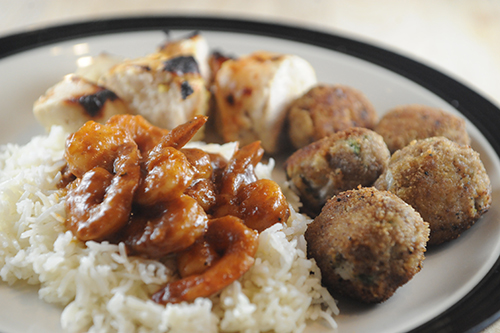

.svg/553px-Iran_(orthographic_projection).svg.png)
